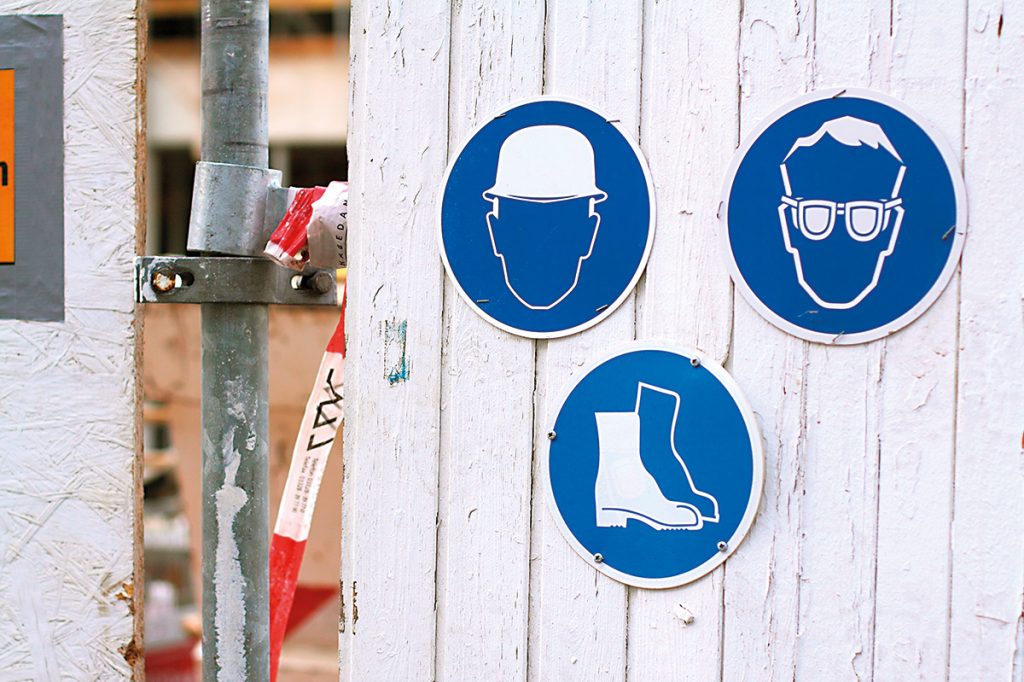The origins of normativity
Assessor teaching and the emergence of norms

Norms govern many aspects of human behaviour and facilitate coordination in cooperative activities. Regarding the origin of normativity, the most widely accepted hypothesis holds that it was shaped by processes of cultural selection between human groups with different rules on how to organise social life. However, in our opinion, we still lack an evolutionary explanation that would allow us to trace the origins of this incipient normativity in early humans. In this text we suggest that normativity appeared early in the development of our hominin ancestors as a consequence of the development of elementary teaching skills, understood not only as the ability to show others how to do something, but also as the ability to point out what one may and may not do.
Keywords: learning, assessor teaching, culture, cooperation, normative psychology.
The importance of normativity in human societies
Norms govern many aspects of the functioning of human societies. We can define a norm as a behavioural pattern that is considered appropriate or correct within a society. Norms mark out what is proper, permitted, required, or forbidden for all or part of the members of a community in different situations. Even as children, humans can perceive that many activities are regulated by different norms. Generally, when individuals adopt a norm, it starts guiding their future behaviour. Many norms are internalised in such a way that individuals not only try to comply with them, but they also feel motivated to make others comply and to participate in punishing those who do not. As a result, guidelines governing the lives of the members of a community become fixed.
The adoption of norms allows for the proper integration of individuals into their societies. From an evolutionary perspective, the strategy of following and enforcing rules appears to be adaptive. Rules facilitate coordination in cooperative activities and simultaneously prevent selfish attitudes by punishing those who do not follow them. Thus, the human mind is thought to have developed a set of psychological mechanisms dedicated to successfully navigating a normative world so that individuals can detect the rules that govern their environment, apply those rules to their behaviour, and demand that others do so as well (Chudek & Henrich, 2011; Sripada & Stich, 2007). In other words, our species is thought to have evolved a normative psychology.
In recent years, enormous effort has been made to investigate both how the psychological mechanisms responsible for normativity function and are ontogenetically developed, as well as the causes that led to their evolution. This paper tries to define the evolutionary setting that drove the development of normative psychology, in the hope of also shedding light on some aspects of its functioning. First, we review the main hypotheses used to explain the evolution of normativity and then we propose that a key factor in the development of normative attitudes was the early emergence of elementary forms of teaching, based on approving or disapproving children’s learning.
The evolution of normativity
Cumulative culture and cooperation in large groups are considered to be two essential characteristics that have conditioned the evolutionary success of our species and have differentiated us from our closest primate relatives. Importantly, the evolution of normative psychology has been linked to both these factors (Chudek & Henrich, 2011; Richerson & Boyd, 2005; Sripada & Stich, 2007).

Photo: Pxhere
The turning point came when our capacities to imitate and learn from each other became powerful enough to make cumulative culture possible (Richerson & Boyd, 2005; Tomasello, 2014). Culture is seen as information passed on between individuals and groups through processes of social learning, especially imitation and teaching. Thus, culture can be considered cumulative when culturally transmitted behaviours, technologies, and beliefs are so complex that, in the absence of social learning, no single individual would be able to develop them. The accumulation of information (which, on average, is adaptive), allowed our ancestors to control and reshape their environment, facilitating their survival. The expansion of our species (and previous ones in the hominin line) across a large part of the planet where they would come to face very diverse environments, would not have been possible without this cumulative cultural learning.
«The adoption of norms allows for the proper integration of individuals into their societies»
The adaptive advantage provided by cultural accumulation favoured the development of brains better equipped for cultural learning (Richerson & Boyd, 2005; Tomasello, 2014). This led to the evolution of highly efficient imitative skills and social learning biases that function as strategies to make it easier to know what to learn and who to learn it from (Richerson & Boyd, 2005). These are the so-called context biases that promote the imitation of cultural variants based on criteria such as conformity, prestige, success, or similarity. These two traits – efficient imitation and biased transmission – are the result of our adaptation as cultural organisms and are thought to have been key in the establishment of normativity in human societies. This is because they both facilitate the homogenisation, maintenance, and dissemination of the norms that govern them.
Regarding its origin, the evolution of normativity has been associated with its contribution to our species’ ability to cooperate in large groups comprising many unrelated individuals (Richerson & Boyd, 2005; Tomasello, 2014). Large-scale cooperation can best be understood as a product of culturally evolving social norms (Henrich, 2015). Thus, information about the norms that govern a community is crucial if one is to participate smoothly in it and coordinate with other members in a wide range of cooperative activities such as obtaining resources, caring for children, responding to threats, or interacting with outsiders (Chudek & Henrich, 2011).
The importance of norms in the success of human societies has been the driving force behind both the evolution of normative psychological traits as well as which type of norms have prevailed. The most widely accepted hypothesis argues that our species’ normativity was shaped by processes of inter-group cultural selection (Henrich, 2015). Once individuals managed to agree on how to behave in some cooperative activities and to culturally transmit these guidelines with sufficient fidelity, competition on how to organise cooperation developed between groups possessing different norms. Thus, competition between cultural groups including communities, tribes, or nations contributed to the spread of more effective cooperative norms (Henrich, 2015). Successful cooperation simultaneously led to intra-group selection pressures to avoid deviations from the norm. These selection pressures reshaped human social psychology, giving rise to what we call tribal instincts and to a strong tendency towards normativity (Richerson & Boyd, 2005). This resulted in an increased ability to guide behaviour through norms and to the development of social emotions such as guilt (when one does not act properly), pride (when one does), or loyalty, which all encourage cooperative living within each individual community while also making cooperation with other communities more difficult.
The abovementioned hypotheses provide plausible explanations for the evolution of normative psychology and of social norms and institutions in our species: a process that was shaped over the last 150,000 years. However, what we still lack is an evolutionary explanation that would allow us to trace the origins of the incipient normativity of early humans, which distanced them, in normative terms, from the phylogenetic line that would eventually lead to chimpanzees and bonobos. In this regard, Birch (2021) has recently suggested that the essential elements of human normative cognition emerged to solve problems presented by the social learning of complex motor skills involved in tool making. Here, we suggest that normativity appeared early in our hominin ancestors because of the development of elementary teaching skills. This can be understood not only as the ability to show others how to do something, but also as the capacity to point out what should and should not be done (Castro et al., 2019; Castro & Toro, 2004; Peregrin, 2014).
Assessor teaching and its impact on normativity
Our proposal considers that the evolutionary scenario that turned us into normative beings is related to our evolution as cultural organisms with the ability to teach. The most distinctive element in this evolution arises with the emergence of the ability to guide children’s learning by approving or disapproving of the behaviours they learn (Castro & Toro, 2004). These basic forms of initial pre-linguistic teaching, which we call assessor teaching, transformed social learning into a cultural inheritance system. The term assessor refers to humans’ unique ability to give advice about what to do and how to do it. Chimpanzees can assess the behaviour of other individuals as favourable or unfavourable to their interests and can act accordingly, but the ability to approve or disapprove of their offspring’s learning is apparently absent in non-human primates (Castro et al., 2019; Premack, 2007).
«Children perceive the social emotions derived from performing a behaviour as objective signals of the intrinsic value of such behaviours»
Assessor teaching allows parents to pass their accumulated experience (regarding both behaviours that should be imitated or avoided) to their children. We termed the set of cognitive features that made assessor teaching possible suadens psychology based on the Latin word suadeo: to assess, approve, or advise (Castro et al., 2019). Suadens cognitive architecture probably emerged among our hominin ancestors with the consolidation of the Acheulean lithic culture around 1.5 million years ago. This is consistent with the hypothesis that the transition from Olduvayan to Acheulean lithic culture required social learning mechanisms with high replicative fidelity, including elementary forms of teaching (Shipton & Nielsen, 2018).
The ability to guide the learning of a community’s descendants was adaptive because it allowed for improved cultural transmission in several ways (Castro et al., 2019). On the one hand, it made it possible to transmit information about things that an individual should not do: information that cannot be acquired by simple imitation. This translates into two specific advantages: a) it makes it possible to obtain a negative evaluation of a specific behaviour without the need to suffer the negative consequences of trial and error; b) it avoids the potential negative effects of imitation in young individuals by forbidding learners from imitating inappropriate behaviours. On the other hand, it can also increase the efficiency of the cultural learning process by c) increasing the accuracy of replication of imitated behaviours, which is essential for cultural accumulation and the development of complex technologies; and d) favouring the adoption of behaviours with no immediate positive feedback, thereby avoiding the costs of abandoning a learned behaviour whose favourable evaluation is only perceptible in the long term.

Photo: Pixabay
Three main psychological characteristics had to evolve to make this transmission of evaluative information between parents and children possible. First, parents had to be able to categorise their own behaviour and that of others in evaluative terms (i.e., appropriate/inappropriate or right/wrong). To do this, the observer of a behaviour had to be able to compare that behaviour with what they had learned about how to behave in a similar situation. The comparison generates a feeling of appreciation or dislike for what is being observed and serves as a basis for characterising it as appropriate or inappropriate, right or wrong, or imitable or dismissible. Based on their personal experience, each individual perceives their own categorisation as true and objective information concerning the value of the behaviour in question (Castro et al., 2021).
Secondly, the outcome of the parental assessment must be communicable to the offspring – in the simplest case, using signals of approval or disapproval. The approval or disapproval has a prescriptive character that reveals whether or not the observed behaviour should be carried out and, if so, if the execution was correct. Thirdly, the young learner must be able to interpret the evaluative cues. Trial-and-error learning uses the emotions of satisfaction and dissatisfaction that arise from performing a behaviour to decide whether to incorporate it into the individual’s behavioural repertoire or not. What is new about cultural assessor learning is that part of these emotions originates in parental approval or rejection of the learned behaviour.
As a result, the individual can now evaluate it in two ways, one stemming from the direct emotions of pleasure or displeasure elicited by the behaviour itself, with the other one being socially derived from the emotions of pleasure or displeasure induced by signs of approval or disapproval from the parents or from their most intimate social environment. Children use this orientation to categorise behaviour as appropriate or inappropriate. In this way, children perceive the social emotions derived from performing a behaviour as objective signals of the intrinsic value of such behaviours. The consequence from this process can be summarised as follows: if a behaviour is approved of, then it is good; if it is disapproved of, then it is bad (Castro et al., 2021).
Our theory is that hominids equipped with the capacity for assessor teaching were primed to become normative creatures, favouring the development of cooperation in our species. Brandom (1994) called the tendency to approve or disapprove of the behaviour of others normative attitude. We suggest that, at the ontogenetic stage, evaluative communication between parents and children should be complemented by evaluative communication between individuals of the same generation (Castro et al., 2010). This allows the assessor teaching model to be extended to encompass a more general context in which approval or disapproval of a behaviour may come from individuals who are not necessarily related to each other. Thus, the evolution of a tendency to provide and accept recommendations from the most closely related individuals – i.e., their reference group – may have been adaptive, serving as a tool for sharing information about how to act, encouraging the coordination of cooperative behaviours and the marginalisation or punishment of cheaters (Castro et al., 2010).
Available empirical evidence: normativity in children
The problem with evolutionary hypotheses is that it is very difficult to test them empirically. Normally, we can only find (or fail to find) indirect support for a proposal. With respect to our subject matter, several recent studies on the ontogeny of normativity in young children stand out. These studies have convincingly shown that children are extraordinarily sensitive to the presence of norms in their social environment and tend to interpret their findings about how things are actually done in prescriptive terms; that is, in terms of how they should be done.
A paradigmatic example of this can be found in the experiment by Schmidt et al. (2016). These authors showed that three-year-olds behave as promiscuous normativists in the sense that they infer the existence of a norm without anything in the observed adult’s behaviour indicating that it exists. In the experiment, children observed an adult handling an object, then they were allowed some time to learn how to use it based on what they had seen. Next, they observed a puppet manipulate the object in a different way and at least some of them tried to correct it, disapproving of the way the puppet acted. According to the authors, these results suggest that children have a natural and proactive tendency to move from «it is» to «it should be». In other words, children see the observed actions as prescriptive, perceiving them as objective normative rules that apply equally to all.
In our opinion, this behaviour is best understood as a reflection of our suadens psychology: evolved as a tool to guide learning. As we understand it, children compare their manipulation of the object with that of the puppet and conclude that the puppet is acting incorrectly, which produces an uninteresting result. The disapproval that some express towards the puppet’s behaviour is an attempt to correct it. This process is more similar to parents’ disapproval of their children when they do not reproduce a behaviour correctly than it is to the application of a norm. If we are right, this tendency to transmit information on how to act, which is characteristic of assessor teaching, constitutes the evolutionary root of normativity.
References
Birch, J. (2021). Toolmaking and the evolution of normative cognition. Biology & Philosophy, 36, 4. https://doi.org/10.1007/s10539-020-09777-9
Brandom, R. (1994). Making it explicit: Reasoning, representing, and discursive commitment. Harvard University Press.
Castro L., Castro-Nogueira, L., Castro-Nogueira, M. A., & Toro, M. A. (2010). Cultural transmission and social control of human behavior. Biology and Philosophy, 25, 347–360. https://doi.org/10.1007/s10539-010-9201-y
Castro, L., Castro-Nogueira, M. A., Villarroel, M., & Toro, M. A. (2019). The role of assessor teaching in human culture. Biological Theory, 14, 112–121. https://doi.org/10.1007/s13752-018-00314-2
Castro, L., Castro-Nogueira, M. A., Villarroel, M., & Toro, M. A. (2021). Assessor teaching and the evolution of human morality. Biological Theory, 16, 5–15. https://doi.org/10.1007/s13752-020-00362-7
Castro, L., & Toro, M. A. (2004). The evolution of culture: From primate social learning to human culture. Proceedings of the National Academy of Sciences, 101, 10235–10240. https://doi.org/10.1073/pnas.0400156101
Chudek, M., & Henrich, J. (2011). Culture-gene coevolution, norm-psychology and the emergence of human prosociality. Trends in Cognitive Sciences, 15(5), 218–226. https://doi.org/10.1016/j.tics.2011.03.003
Henrich, J. (2015). The secret of our success: How culture is driving human evolution, domesticating our species, and making us smarter. Princeton University Press.
Peregrin, J. (2014). Rules as the impetus of cultural evolution. Topoi, 33, 531–545. https://doi.org/10.1007/s11245-013-9219-2
Premack, D. (2007). Human and animal cognition: Continuity and discontinuity. Proceedings of the National Academy of Sciences, 104(35), 13861–13867. https://doi.org/10.1073/pnas.0706147104
Richerson, P. J., & Boyd, R. (2005). Not by genes alone. University of Chicago Press.
Schmidt, M. F., Butler, L. P., Heinz, J., & Tomasello, M. (2016). Young children see a single action and infer a social norm: Promiscuous normativity in 3-year-olds. Psychological Science, 27(10), 1360–1370. https://doi.org/10.1177/0956797616661182
Shipton, C., & Nielsen, M. (2018). The acquisition of biface knapping skill in the Acheulean. In L. D. di Paolo, F. di Vincenzo, & F. de Petrillo (Eds.), Evolution of primate social cognition (pp. 283–297). Springer. https://doi.org/10.1007/978-3-319-93776-2_18
Sripada, C. S., & Stich, S. (2007). A framework for the psychology of norms. In P. Carruthers, S. Laurence, & S. Stich (Eds.), The innate mind, Volume 2: Culture and cognition. Oxford University Press.
Tomasello, M. (2014). A natural history of human thinking. Harvard University Press.





